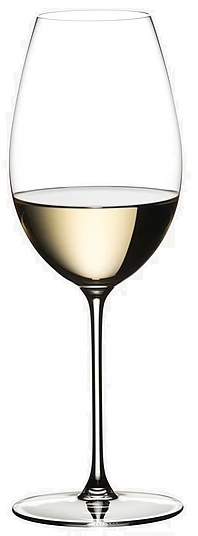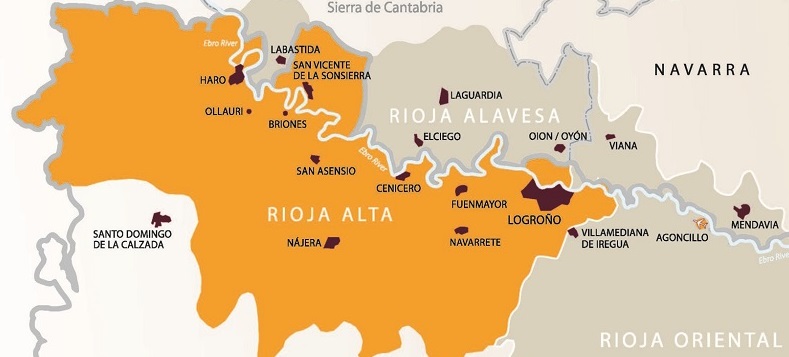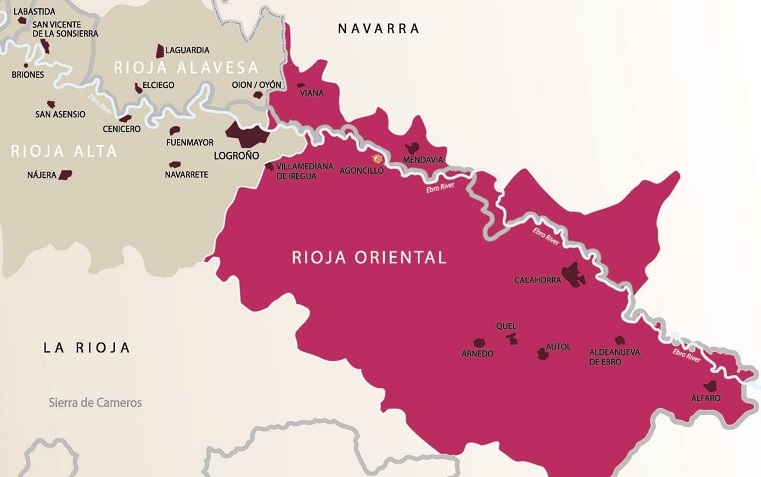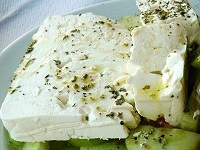Rioja Blanco (Spain)
White Rioja is made from minimum 51% Viura grapes.
Rioja Blanco is produced in different styles: Unoaked and Oaked.
This card describes Unoaked Rioja Blanco.
Rioja Blanco Flavors
Rioja Blanco wines often exhibit a delicate and fresh aromatic profile, featuring notes of green apple, pear, citrus fruits (lemon and lime), and white flowers.
Delicate notes of Herbs, fresh-cut Grass and Pepper.
In more aged versions, aromas of honey, almond, and dried fruits can develop.
In barrel-aged wines, vanilla and toast flavors can be present.
Lime |
Apple |
Pear |
Peach |
Herbs |
Flowers |
Gras |
Pepper |
Rioja Blanco Profile
A fresh and young Rioja Blanco is much like a Sauvignon Blanc:
| SUGAR: | Dry (3 g/l) |
| BODY: | Medium |
| FRUIT: | Medium |
| ACIDITY: | Medium - High |
| ALCOHOL: | 12-13% ABV |
| Serving temperature: 8-10°C (46-50°F) | |
Rioja Blanco Food Pairing
Rioja Blanco is very food friendly.
Spanish. Italian. International. Asian. Mexcican. Vegetarian.
Salads |
Tapas |
Seafood |
Carcuterie |
Fish |
Chicken |
Pork |
Veal |
Excellent Pairings
Vinegar. Zesty Salads. Asparagus.
Tapas. Appetizers. Olives.
Seafood. Prawns. Shellfish.
Grilled Fish. Grilled Squid.
Garlic. Aioli. Garlic Prawns.
Salmon. Trout. Sushi. Sashimi.
Cheeses
Goat Cheese. Feta.
Spanish Specialities
Gazpacho (Cold Vegetable Soup).
Fried Baby Squids.
The Ideal Glass for Rioja Blanco

|
The Sauvignon Blanc glass is smaller than a Chardonnay glass.
It has a more narrow bowl to concentrate the crisp and citrusy aromas of a zesty and fruity white wine. |
Rioja Blanco Cheese Pairing
Rioja Blanco is known for its crisp and fruity profile. It pairs well with a variety of cheeses.
Opt for cheeses with moderate saltiness and creaminess to balance the wine's acidity. You can also add accompaniments like fresh fruits (grapes, apples, pears), nuts (almonds, walnuts), and a light drizzle of honey to enhance the pairing.
Fresh and Mild Cheeses
Mozzarella: Its delicate flavor pairs well with the wine's lightness.
Ricotta: Especially good if served with a drizzle of honey or fresh fruits.
Goat Cheese (Chèvre): The tanginess complements the subtle fruit notes in Rioja Blanco.
Semi-Soft Cheeses
Fontina: Its nutty, buttery qualities make a good match.
Brie: The creamy texture and mild flavor work beautifully with Rioja Blanco.
Camembert: Similar to Brie but with slightly more earthiness.
Hard Cheeses
Asiago: Lightly aged Asiago adds a complementary tang to the wine.
Manchego: A classic Spanish pairing, especially younger Manchego, which is less intense.
Gruyère: Mildly nutty and sweet, enhancing the wine's subtlety.
Blue Cheeses (for contrast)
Robiola: Its mild creaminess contrasts nicely without overpowering the wine.
If You Like Rioja Blanco
You May Also Like:
Rioja Blanco DOCa
Rioja Blanco wines are a blend of various grapes.
White Rioja is made from minimum 51% Viura grapes.
Pluss a combination of any of the grapes Malvasía de Rioja, Garnacha Blanca, Tempranillo Blanco, Maturana Blanca, Turruntés de Rioja, Chardonnay, Sauvignon Blanc, and Verdejo.
| DOCa | Denominación de Origen Calificada |
|---|---|
| Rioja Blanco | Joven (Young). Unoaked. |
| Crianza | Minimum 12 months aging. 6 months in Oak. |
| Reserva | Minimum 24 months aging. 6 months in Oak. |
| Gran Reserva | Minimum 48 months aging. 6 months in Oak. |
Wine Region Rioja
Rioja is a famous wine region in the north-central part of Spain. It is Spain’s largest red wine producing region with over 600 wineries and an annual production of over 400 million bottles.
The Rioja region is a denominación de origen calificada, "Qualified Designation of Origin (D.O.Ca)", the highest category in Spanish wine regulation.
Rioja wines ares made from grapes grown in La Rioja and Navarre, and the Basque province of Álava.
The key appellations are Rioja Alta, Rioja Alavesa, and Rioja Oriental (previously Rioja Baja).
Rioja Alta (Rioja High)

Rioja Alta is Located on the western side of Rioja. It has an Atlantic climate, and its soils consist of iron-rich clay mixed with limestone. Thanks to the elevation and cooler temperatures, Rioja Alta wines have more tannin and higher acidity than Rioja Oriental, and they are often more elegant.
Rioja Alavesa

Rioja Alavesa is the smallest of the Rioja regions. It is located between the Ebro River and the rocky mass of the Sierra Cantabria. The wines bear a high resemblance to the wines of Rioja Alta with high tannins and high acidity.
The vineyards here are located at high altitudes, resulting in cooler temperatures that aid in the acquisition acid levels and good colour. The soil is rich in chalky clay, limestone and sand.
Rioja Oriental (Rioja East)

The wines from Rioja Oriental (Rioja East), formerly the Rioja Baja (Rioja Low) are fruit-forward and the wineries focus on wines designed to drink young.
Red Wines
The region is best known for high-quality Rioja Wines.
A typical Rioja blend consists of 60% Tempranillo ("the Grape of Spain") and 20% Garnacha along with other fruity additives like Mazuelo (Cariñena) and Graciano.
White Wines
Viura (Macabeo) is the dominant white grape in Rioja, accounting for 70% of white varieties.
Viura is also found in France, particularly in Roussillon and the Languedoc, where it is called Maccabeo or Maccabeu.
Nine white varieties is allowed to use in white Rioja: Viura, Malvasía Riojana, Garnacha Blanca, Chardonnay, Sauvignon Blanc, Verdejo, Maturana Blanca, Tempranillo Blanco and Torrontés.
DOCa Rioja (La Rioja)
Rioja was the first Spanish wine region to obtain DO status in 1925. In 1991, it was promoted to DOCa (Qualified Designation of Origin), a higher category reserved for wines maintaining a proven consistency and quality over a long period of time.
| Black Grapes | White Grapes |
|
88% Tempranillo |
70% Viura (Macabeo) |
| Red Wines | White Wines |
|
|
Viura (Macabeo) |
| Soil | Climate |
|
Rioja Alta: Rioja Alavesa:
Rioja Oriental (Baja): |
Hilly Riverbanks. |

Alcohol can be addictive. Always drink in moderation.
© Copyright 2015-2025 W3 Wine School. All Rights Reserved.



















